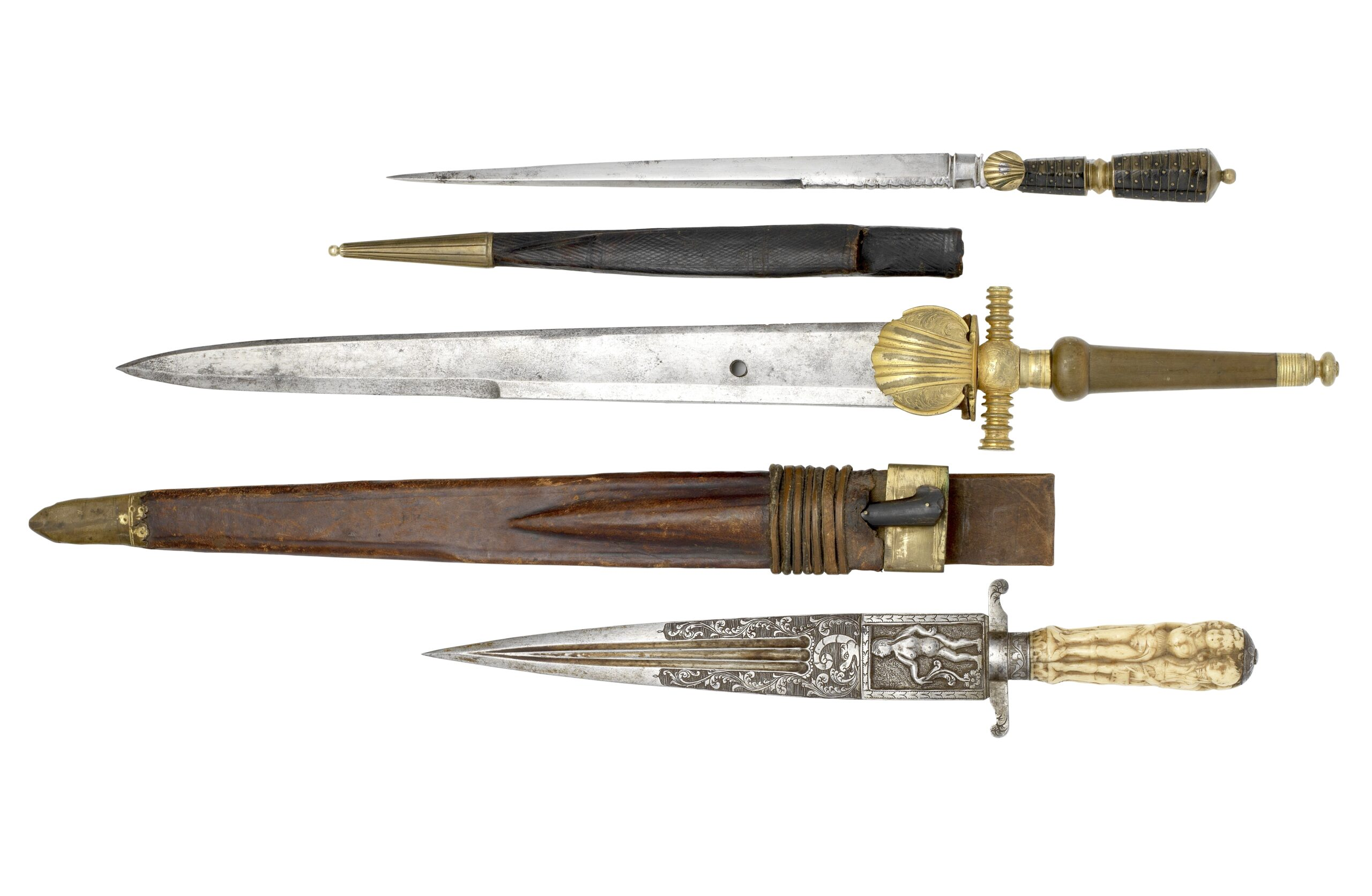During the Crusades—a series of military campaigns undertaken by the Christian kingdoms of Medieval Europe between the 11th and 13th centuries to recapture the Holy Land—Crusader swords became essential tools of war, and also religious symbols laden with meaning.
They were not simple medieval weapons: they represented the power, faith and duty of Christian knights.
Forged to withstand harsh hand-to-hand combat, their design and evolution responded to both practical and spiritual needs.
These straight, double-edged swords accompanied thousands of knights who traveled from Europe to Jerusalem.
Today, his legacy remains both in museums and in the collective memory, serving as a tangible testimony to one of the most turbulent and symbolic periods of the Middle Ages.
Origin and evolution of crossed swords
The origin of the swords used by the Crusaders dates back to the Carolingian swords, which in turn descended from the Roman spatha.
By the end of the 11th century, when Pope Urban II proclaimed the First Crusade in 1095, most European knights were already carrying swords with a straight, double-edged blade and crossguard.
They were balanced weapons, made for cutting, but which also allowed limited thrusts.
As the Crusades progressed and fighting became more intense, swords evolved to better meet the needs of the battlefield.
In the 12th century, swords with sharper, more pointed blades appeared, useful for penetrating light armor.
Around the 13th century, longer and more versatile hand-and-a-half versions began to appear, capable of offering greater reach and impact power.
This development paralleled the growth of military orders, such as the Templars and Hospitallers, who often carried swords with crosses engraved on the blade or pommel, as a symbol of their divine cause.

Types and uses of Crusader swords
Crossed swords, although similar in general structure, varied according to style, time, and function.
Some of the most notable types include:
· Type X sword (according to Ewart Oakeshott's classification): common in the 11th century, with a wide, short blade, ideal for forceful cuts.
· Type XII sword (According to the same classification): used in the 13th century, thinner and with better thrusting capacity, while maintaining its cutting effectiveness.
· One-and-a-half-handed sword: Also known as the "bastard sword," it emerged toward the end of the Crusades; it allowed the use of one or both hands, providing greater versatility in combat.
These swords were used in sieges as well as in pitched battles, duels and mounted charges.
The cross formed by the guard and the blade was also a constant reminder of Christian duty.
They were often blessed before combat and guarded with great reverence.
It was not unusual for knights to ask to be buried with them.

Conservation and presence in museums
Numerous Crusader swords have survived to this day thanks to archaeological discoveries and preservation in European museums.
Some of the most representative examples are found in:
· The National Archaeological Museum (Madrid): houses medieval swords of Crusader influence that demonstrate the adaptation of this type of weapon to the Iberian Peninsula.
· The British Museum and the Royal Armouries Museum (UK): house original swords of Anglo-Norman and French knights who participated in the early Crusades.
Swords have also been found in the remains of Crusader fortresses in the Holy Land, such as in the city of Acre, the last major Templar outpost in the East.

Swords with a strong symbolic charge
The swords of the Crusaders represent a legacy of iron forged between war and devotion.
Their design, adapted to the brutality of medieval combat, did not overshadow the profound symbolism they carried.
These weapons, with their elegant cross shape, transcended their lethal function to become badges of identity, honor, and faith.
Today, preserved in museums and historical studios, they continue to tell the story of men who fought not only with steel, but with conviction.










